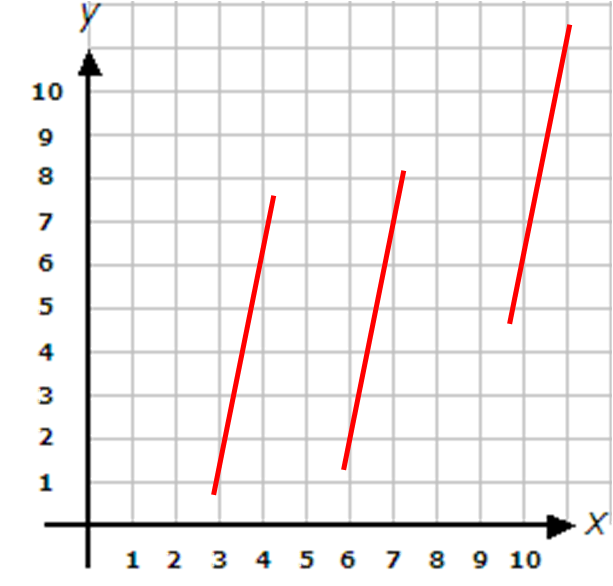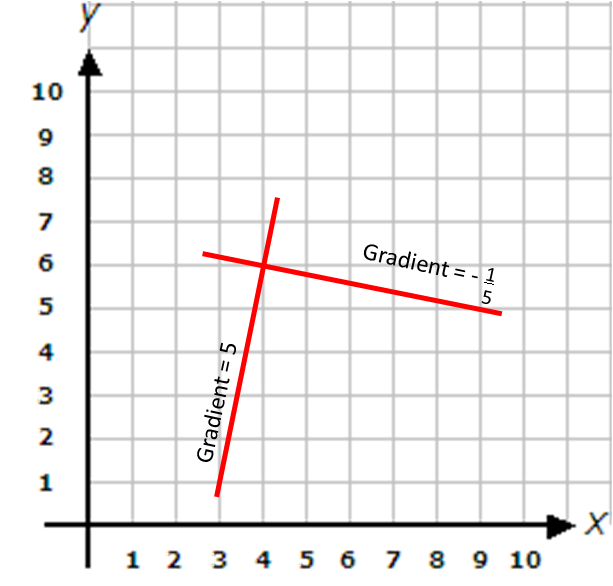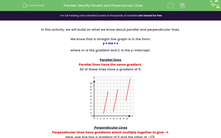In this activity, we will build on what we know about parallel and perpendicular lines.
We know that a straight line graph is in the form:
y = mx + c
where m is the gradient and C is the y-intercept.
Parallel lines
Parallel lines have the same gradient.
All of these lines have a gradient of 5.

Perpendicular Lines
Perpendicular lines have gradients which multiply together to give -1.
Here, one line has a gradient of 5 and the other of -1/5.

To find the gradient of a line which is perpendicular to one of gradient a/b, we invert the fraction and multiply by -1.
This is called the 'negative reciprocal'.

Don't worry - it's easier than it sounds!
We are going to use all this information to find straight lines which are parallel and perpendicular!
Let's look at a typical question!
Example
State the straight line which is parallel to
y = 2x + 5
and goes through the point (0, 3)
Answer
From the straight line
y = 2x + 5
We can see that the gradient m is 2
For a line to be parallel, it must have the same gradient.
y = 2x + C will be parallel.
Our line also passes through (0, 3) which is the y-intercept C
Therefore, the answer is:
y = 2x + 3
We do exactly the same for a perpendicular line, but instead of the gradient m repeated we find the negative reciprocal.
That is the inverse and x by -1
So, if the gradient was 2, then the perpendicular gradient is -1/2

Let's try some questions!








